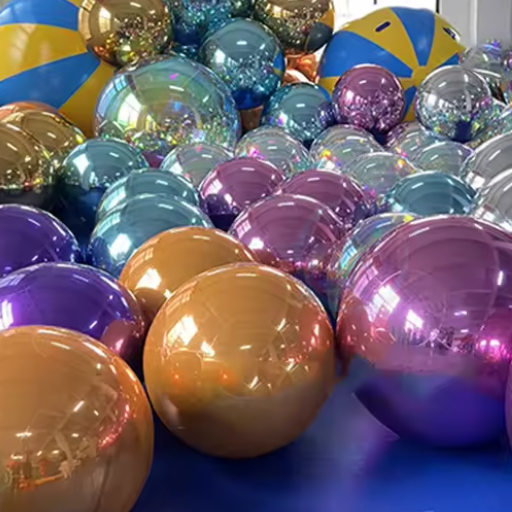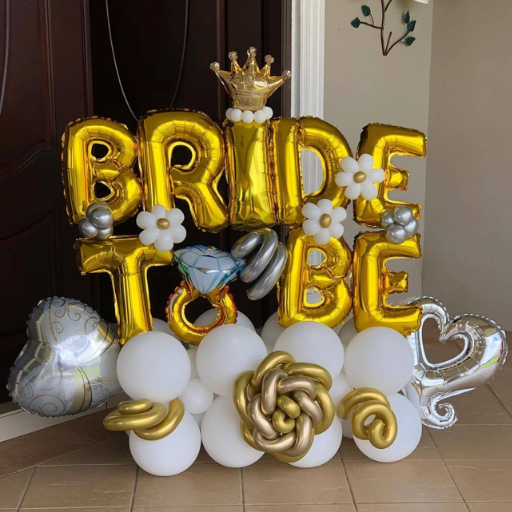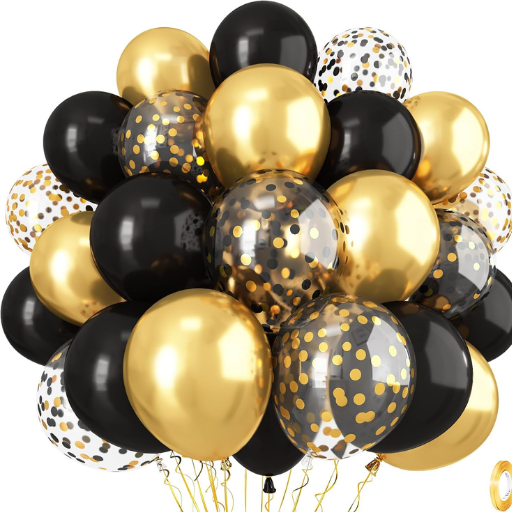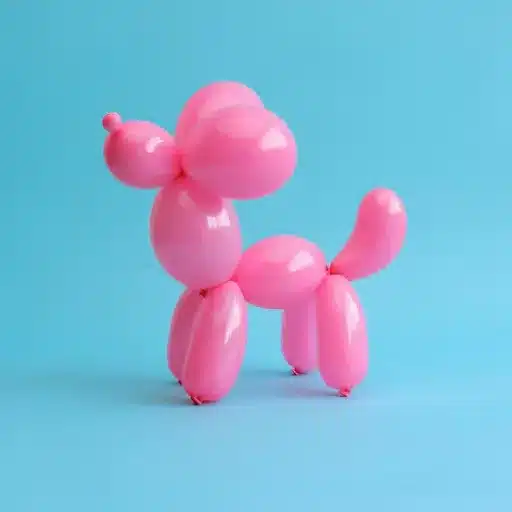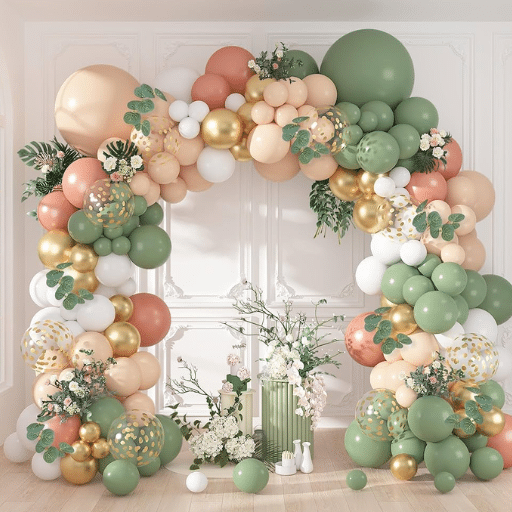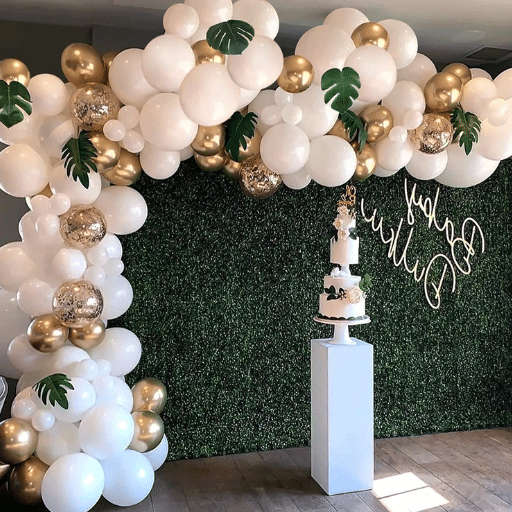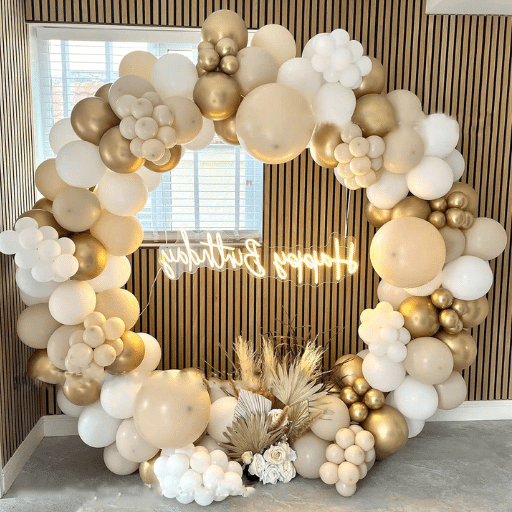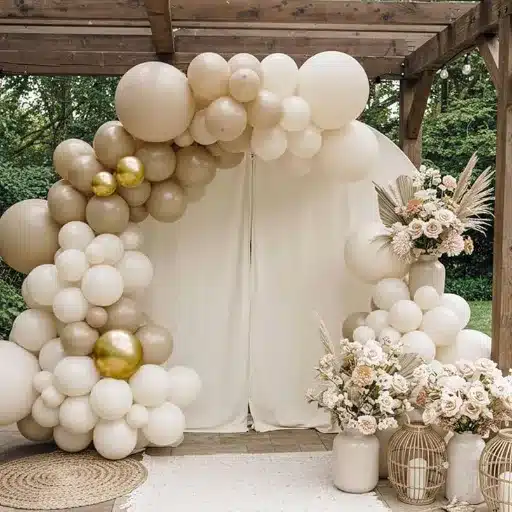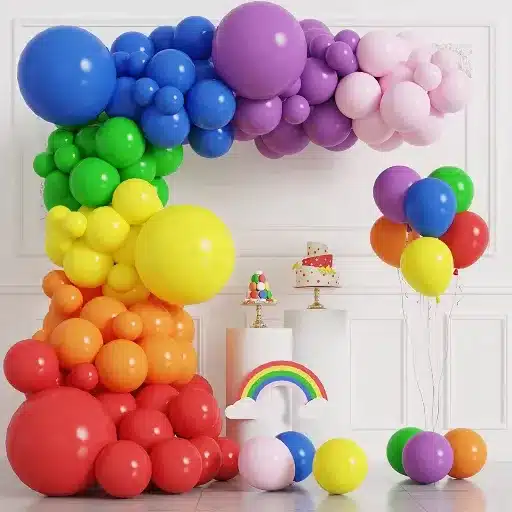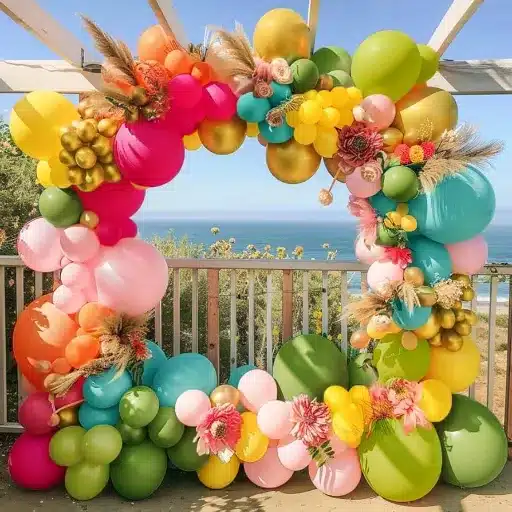Balloon animals have been a classic source of amazement and fun for a long time, and their bright colors and imaginative shapes are able to attract both kids and grown-ups. If you are going to have a party, want to take up the creative hobby of balloon sculpting, or just wish to spread joy, then learning how to make balloon animals is not as hard as you may assume. The following blog will introduce you to the art of balloon animals by taking you through the simple techniques and clever tips that will soon make you a creator of whimsical creatures. Prepare yourself to open up a new world of fun and ingenuity, one twist after the other!
Introduction to Balloon Twisting
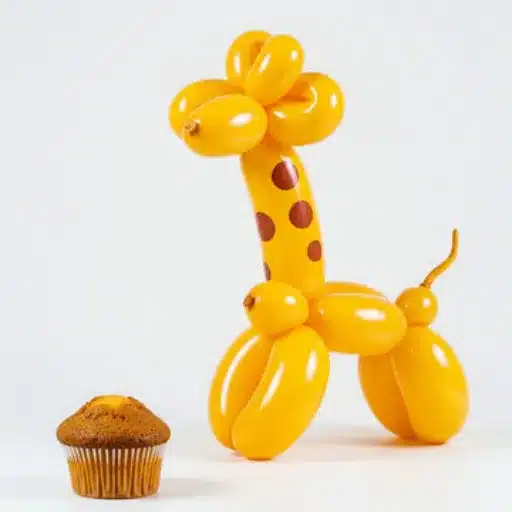
Balloon sculpting which has a lot of fun and rewarding to one’s skill is such a thing that everybody can master if he/she practices a little bit. Anyway, step by step I will teach you balloon animals and bring happiness to my surroundings by performing one twist at a time.
Why Learn Balloon Art?
Balloon art is not only a cool party trick but also the gift of the invention with incredible social, emotional, and even economic benefits. To mention a few, balloon twisting is a really effective way of interacting and entertaining mixed groups of all ages. Kids’ birthday parties as well as corporate events are in great demand for the presence of balloon artists since the ability to create beautiful and funny shapes gives kids a reason to laugh and makes the event a memorable one.
The emotional aspect of this skill is that it helps the people that are learning it to be more creative and less stressed. Scientific evidence supports that artistic pastimes like balloon twisting can be regarded as direct mental health improvers because of the mindfulness and focus they promote. One interesting example is a study from 2023 which reported that stress was reduced by 75% in the participants who did art.
Benefits of Making Balloon Animals
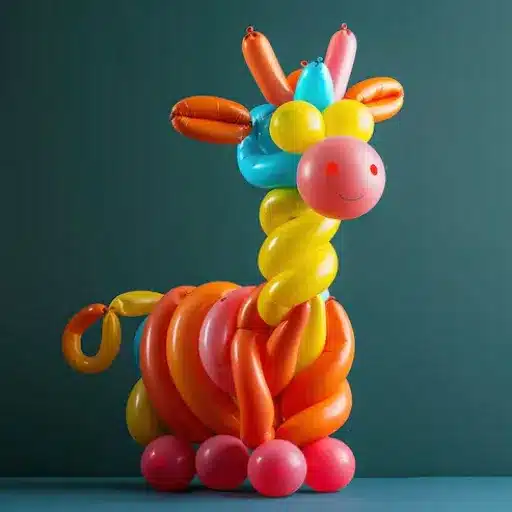
✦ Enhances Creativity and Problem-Solving Skills
Making balloon animals involves a fusion of inventiveness and tactical problem-solving. Every figure is a challenge to the designer to picture the forms and choose the methods to turn their concepts into reality. Research states that the practice of artistic skills like balloon sculpting sparks the brain and increases cognitive flexibility.
✦ Promotes Stress Relief and Mindfulness
The act of bending and molding balloons can be very calming, quite like meditation. Such focused activities can gradually make one less stressed as they promote mindfulness. This was the conclusion of a study conducted by the National Institute of Mental Health which stated that hobbies lead to a person being emotionally healthier.
✦ Social and Financial Opportunities
Balloon art is highly demanded in the milieu of parties, fairs, and corporate events translating it into a monetary-skilled task. There has been a constant rise in the number of entertainers in the U. S. providing a party atmosphere, and depending on the artist’s experience and event’s size, the hourly fee for a balloon artist ranges from $50 to $200. In addition, balloon sculpting is a way to meet people as well as to bring fun and laughter at social events.
Materials Required for Overcoming Balloons
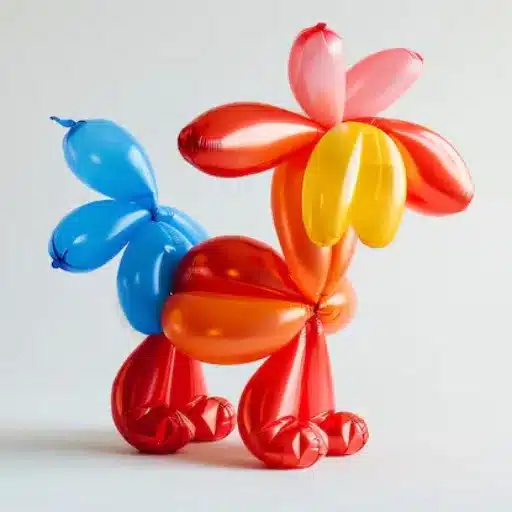
I need a pump to inflate the balloons, high-quality twisting balloons (usually 260 balloons), and a marker for adding details like faces or patterns for the whole process to make balloon animals.
Balloons Suitable for Twisting
Balloons of a special quality are used for making animal models through the twisting technique, which are robust and flexible enough to go through the bending and shaping operation without bursting. The 260 balloons are the type most often used. The “260” reflects the dimensions of these balloons when inflated – about 2 inches in diameter and 60 inches in length, respectively. These balloons are great for the making of numerous shapes, from the simplest of animals to the most complex and intricate designs. They are quite common in the market and are offered in a wide range of bright colors to let the artists mix and match to their liking or simply to add personality to the pieces.
In addition to these, other sizes such as 160 (1 inch in diameter and 60 inches in length) and 350 (3 inches in diameter and 50 inches in length) are also on the list. These sizes, in most cases, are for the purpose of adding details or for making larger, more durable sculptures. For instance, 160 balloons are just right for the tiny details of the petals of a flower or small accessories, while 350 balloons are suitable for the making of hats or striking decorations.
| Balloon Type | Diameter | Length | Best Use |
|---|---|---|---|
| 160 | 1 inch | 60 inches | Small details, flower petals, accessories |
| 260 | 2 inches | 60 inches | Most common, simple to complex animals |
| 350 | 3 inches | 50 inches | Larger sculptures, hats, decorations |
The Selection of the Perfect Pump Model
Manual Balloon Pumps
Manual pumps are light, easy to carry, and inexpensive. They are recommended for people who do balloon decorations as a hobby or on a small scale. It takes physical effort to use this pump but at the same time it allows to control the speed of inflation. For beginners a dual action pump is very much suggested as it reduces the time of inflation considerably compared to single action pumps.
Electric Balloon Pumps
Electric balloon pumps are the most preferred of the when the event is of a larger scale or professional decorators. These pumps make the process of quick and easy inflation and they can be accommodated for high-volume users. The newer models like PartyWoo Balloon Electric Pump come along with features easy to use such as dual air nozzles, a built-in compartment for attachments, and energy efficiency through auto-shutoff functionality. High-powered electric pumps can inflate standard size latex balloons in merely 2-3 seconds. According to the reviews, the IDAODAN Portable Electric Balloon Pump is a model that has become a popular choice because of its lasting quality, low noise during operation and flexibility.
Basic Techniques for Balloon Twisting
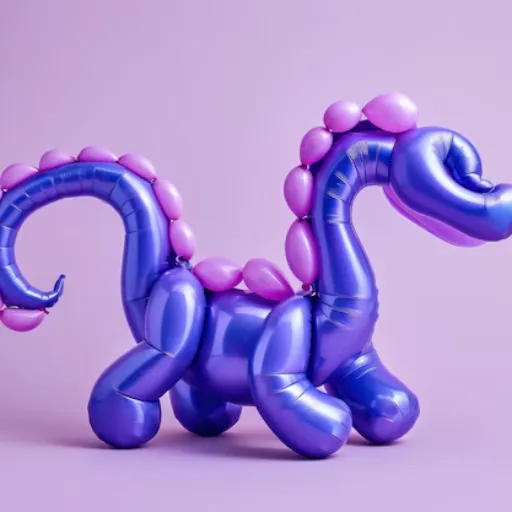
Grasping Balloon Inflation
The procedure of balloon inflation differs according to the kinds of balloons and the tools that are employed. Among the most widely used balloons, latex balloons are often composed of natural rubber that can be stretched to quite a degree, thus keeping the air or helium quite efficiently. To be more precise, a typical 11-inch latex balloon can hold around 0.5 cubic feet of helium, giving it a float time of about 12-20 hours. On the contrary, foil or Mylar balloons are more or less completely non-porous and can keep helium for several days making them appropriate for long-lasting decorations.
In the case of bulk balloon inflating, electric pumps or helium tanks are the main tools. Helium tanks come in a range of sizes, with the most popular about 291 cubic feet of helium, which is enough to blow up approximately 500 standard 11-inch balloons. The method of inflation should be chosen based on the purpose – air inflation is preferable for non-floating decorations while helium is the choice for floating ones.
Mastering Basic Twists
Thus, it becomes necessary to know the basic twists if you are looking professional in making balloon art. The basic “pinch twist” technique provides one with a good grip and stability while producing balloons for the sculptures. When a part of the balloon is pinched and twisted, one can easily develop features like ears, hands, and loops for decoration. It indeed takes a little skill to keep the balloon from popping during twisting through making very minute and frequent twists and making the balloon quite uninflated which promotes flexibility.
The other widely used method is the “lock twist,” which is a very flexible basis for building different kinds of structures ranging from balloon animals to extravagant bouquets. For example, a three-bubble lock twist is often used in balloon dog making while the head and ears are being formed. A snug but controlled twist is the key to durability and the reduction of stress points as per the recent exhibitions and tutorials.
Step-by-Step Guide to Making Balloon Animals
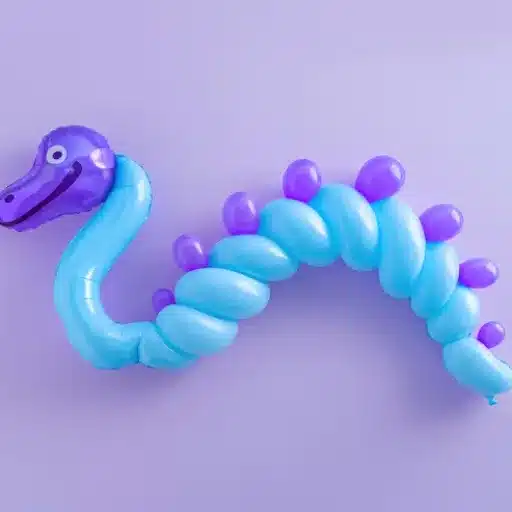
Making a Balloon Dog: Step by Step
- Inflate the Balloon
To begin with, a regular twisting balloon is to be inflated, and the end should be left 3-4 inches deflated. The space left is very important in preventing the balloon from bursting during the twisting process and to fit in the different shapes that would be required for the dog. - Nose and Ears Creation
The ear end of the balloon is the starting point. The nose is formed by twisting a small bubble of about 2 inches long. The next step is to create the ears by twisting two more bubbles of the same size. The “lock twist” technique is used by folding the ears together and twisting them around the base of the first bubble, thus securing the nose and ear structure. - Neck and Front Legs Formation
After the ears, twist a bubble about 3 inches long for the neck. After that, twist two equal-size bubbles (each about 4-5 inches long) for the front legs. Use the lock twist again to join the legs, giving the structure a stable and strong foundation. - Body and Back Legs Shaping
Once the front legs are done, twist one more bubble representing the body of about 5-6 inches long. Then, twist two more equal bubbles for the back legs using the same method as with the front legs. Make sure that the back legs are properly aligned to keep the structure balanced.
Tips & Tricks for Successful Balloon Twisting
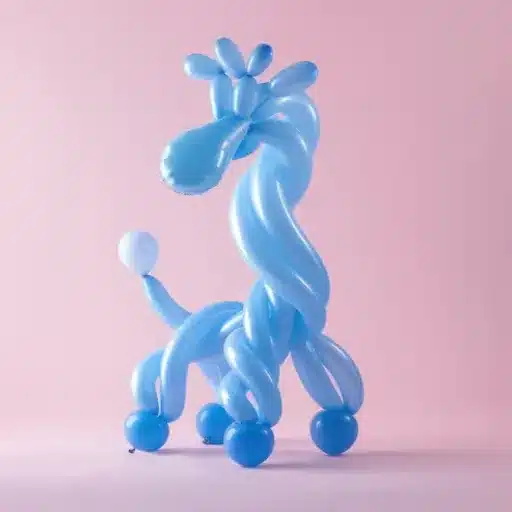
Avoiding Common Mistakes
⚠ Overinflating Balloons
One main reason why balloons burst is that they are blown up too much. When you are inflating the balloon make sure to leave a 1-2 inch tail at the end of the balloon. This extra space is very important because it allows for twisting without increasing the internal tension too much.
⚠ Twisting Technique Errors
Twisting your balloon in the wrong way can make your balloon design very weak. To avoid going back to the previous twists, always twist in the same direction, and ensure that you are securely locking your twists. Develop muscle memory by practicing slow twisting.
⚠ Using Low-Quality Balloons
For successful twisting projects, high-quality balloons are of utmost importance. Professional opinions published lately on balloon brands point to Qualatex and Sempertex as the ones being the most durable and elastic among others. The use of less expensive alternatives might lead to popping easily thus costing time and energy.
Enhancing Your Creativity with Balloons
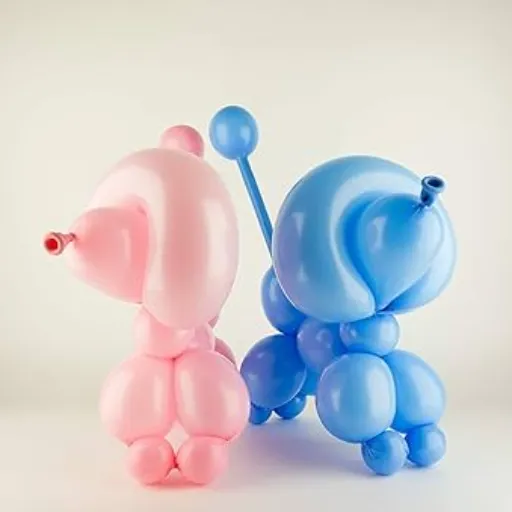
Experiment with Advanced Techniques
Today, balloon artists are going to the extreme and employing various techniques like distortion, weaving, and double-stuffing to make their designs more dimensional and complex. A recent survey conducted in 2023 among professional balloon twisters revealed that more than 65% of them created stronger and more intricate sculptures by using weaving methods.
Leverage Technology and Online Tutorials
The aspiring balloon artists have found their opportunities through the online platforms’ boom like YouTube and TikTok. A simple Google search indicates that there are millions of tutorials that demonstrate the making of impressive balloon designs, providing step-by-step instructions.
Eco-Friendly Balloon Art
That is the case with a noticeable environmental awareness that has come to many creators’ ways of biodegradable latex balloons. An event in 2022 demonstrated that 42% of the organizers drew up their plans with the help of sustainable materials. By the way, why not include these eco-friendly practices in your balloon art? Materials that are left unused can be recycled and suppliers who promote sustainability can work together with you, for example.
Reference Sources
-
The Spruce Crafts
- Title: How to Make Balloon Animals (For Beginners)
- Why Reliable: This site offers beginner-friendly instructions, including tips on balloon types, basic twisting techniques, and step-by-step tutorials. It’s a trusted resource for craft enthusiasts.
-
WikiHow
- Title: How to Make Balloon Animals
- Why Reliable: WikiHow provides detailed, easy-to-follow guides with illustrations, making it accessible for readers of all skill levels. It also includes practical tips for creating various balloon animals.
-
Balloons Online Blog
- Title: How to Make Balloon Animals – Tutorials for Beginners
- Why Reliable: This blog offers a structured approach to balloon twisting, breaking down the process into clear steps. It’s a specialized resource for balloon-related crafts.
Frequently Asked Questions (FAQs)
❓ For novices, what is the simplest balloon creature to create?
For novices, the creation of the dog is the simplest balloon animal to make. Only one balloon and some simple twists suffices for it. Once you master the dog, you can easily show off your skills to children and at parties.
❓ How can one become proficient in making a balloon giraffe?
The learning process of making a balloon giraffe can include the watching of video tutorials that take the viewer to the final product step by step. This cute balloon animal, which is characterized by its long neck, can be crafted with just one balloon. Try it several times as practice is what makes perfect.
❓ Are there video tutorials available for making balloon animals?
Certainly! A multitude of video tutorials can be found on YouTube and similar platforms, which instruct you in the making of their various kinds of balloon animals. Learning to create and twist simple dog swans and more complicated birds will be made easy through such videos.
❓ What materials are necessary for a balloon animal to be made?
For a balloon animal to be formed, the materials needed are: inflated balloons, preferably 260Q type, and a pump to do the inflating. For trimming excess balloon, it’s advisable to have some scissors ready too. Moreover, for those daring enough to create, like, for example, a dinosaur or a princess, additional colors of balloons will come in handy.
❓ Are balloon animals doable for a total amateur?
A vast majority of balloon animals can be considered easy to make, and with a little practice, even an absolute beginner can create amusing sculptures. Simple ones like the balloon dog or sword are the starting point, and after confidence has been built, you can learn how to twist more complex designs.
❓ What are the most entertaining balloon animals to prepare for kids’ parties?
The most entertaining balloon animals for kids’ parties are dogs, swords, and giraffes. These balloon creatures are very much liked by children and are also the most in demand. But you can also come up with balloon bracelets and other easy shapes to keep the kids busy.
Start Your Balloon Twisting Journey Today! 🎈
With these techniques and tips, you’re now ready to create amazing balloon animals that will bring smiles to everyone around you. Remember, practice makes perfect, so keep twisting and have fun!

